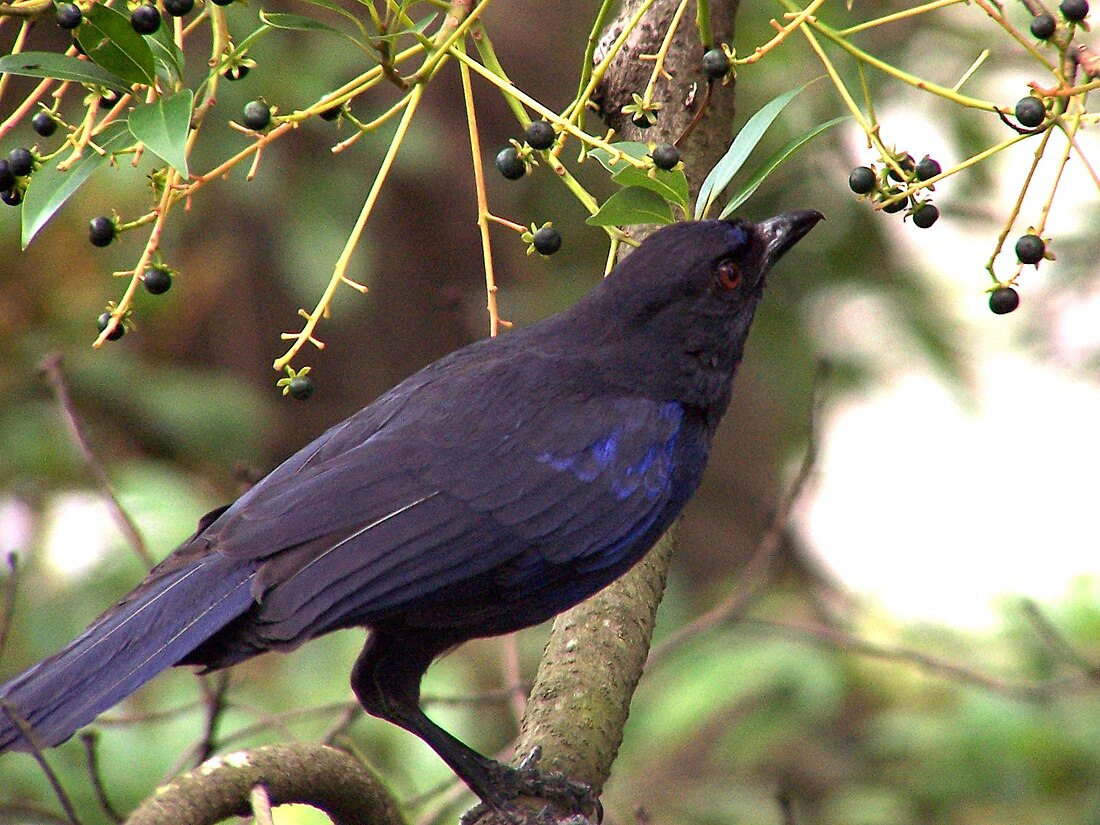Top Qs
Timeline
Chat
Perspective
Whistling thrush
Genus of birds From Wikipedia, the free encyclopedia
Remove ads
The whistling thrushes comprise a genus Myophonus of the Old World flycatcher family Muscicapidae.
They are all medium-sized mostly insectivorous or omnivorous birds. They are all brightly coloured species found in India and south-eastern Asia. The male is usually blue, and the females are either similar to the male or brown. The brighter blue patches found on the shoulders and sometimes the head, of whistling thrushes, uniquely for a passerine, reflect strongly in the ultraviolet.[2]
Remove ads
Taxonomy
Summarize
Perspective
The genus Myophonus was introduced in 1822 by the Dutch zoologist Coenraad Jacob Temminck to accommodate a single species, Myophonus metallicus Temminck. This is a junior synonym of Turdus flavirostris Horsfield, a subspecies of the blue whistling thrush which is therefore the type species.[3][4] There has been confusion as to the correct spelling of the genus name. Temminck's work was published in 102 parts (livraisons) and Plate 170 with the associated text was included in Livraison 29 which was issued in December 1822. However, the assembled volumes included pages inserted before Plate 170 with the genus name spelled as Myiophoneus. These inserted pages cannot have been issued earlier than 1832.[5][6] The genus name Myophonus is from the Ancient Greek muia meaning "fly" and phoneus meaning "slayer".[7]
As the English name suggests, the genus was at one time placed in the thrush family Turdidae but in 2010 two separate molecular phylogenetic studies found that members of the genus were more closely related to species in the Old World flycatcher family Muscicapidae.[8][9]
The genus includes nine species several of which have ranges that are restricted to islands or peninsulas:[10]
Javan, Bornean and brown-winged were formerly lumped as the Sunda whistling thrush, but were split in 2004.[11]
Remove ads
Habits

Whistling thrushes are mostly seen in hilly areas except during winter when they may descend to streams near the plains. They specialize in feeding on snails and their strong hooked bills are used to deal with them. They may choose a particular rock on which they crack the shells.[12]
The nests are usually in crevices of rocks and boulders close to water. The cup nests have moss and twigs and is lined with roots and leaves. The eggs are usually three and sometimes four, elongate with a gray ground colour and marked with speckles.[12]
Remove ads
References
Further reading
Wikiwand - on
Seamless Wikipedia browsing. On steroids.
Remove ads







